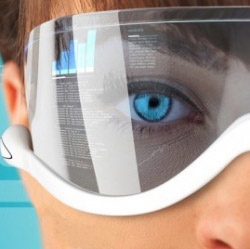
It’s been an interesting year for Google’s most famous side project. After emerging from the company’s suitably mysterious X Lab in April, Glass appeared across the roundtable from Charlie Rose, gave conference attendees a skydiver’s eye view at Google I/O, strutted down the catwalk at New York Fashion Week and shared the stage with California Governor Jerry Brown as he signed a bill into law allowing self-driving cars on the state’s roads.
Yet, there’s still more that we don’t know about Google Glass than we know about it, despite its status as the highest-profile attempt at making wearable computing the next big thing. Public demonstrations of the tech have so far only hinted at its full potential. The promise of Glass echoes that of wearable computing in general, a promise that’s remained largely unfulfilled despite decades of research driven by everyone from the military to DIYers.
That’s not to say those years haven’t been eventful; the very definition of wearable computing has changed during that time. Most recently, it’s become intertwined with the idea of augmented reality. It’s a relatively new term, but in the broadest sense it’s something that goes back decades — even centuries. Eyeglasses and sunglasses restore or enhance our vision, electricity and the light bulb free us from a dependence upon daylight, and the automobile and other means of transportation have expanded the space we consider home, to name just a few examples. But the wearable technologies of today, and those promised for the future, are augmentations of a different sort: not just augmentations of ourselves and our surroundings, but of existing technologies.
